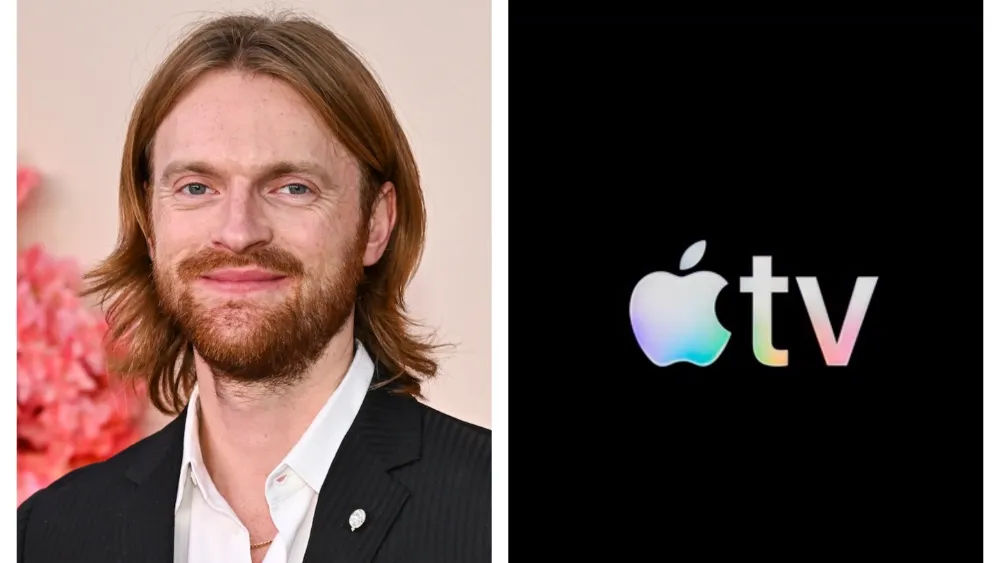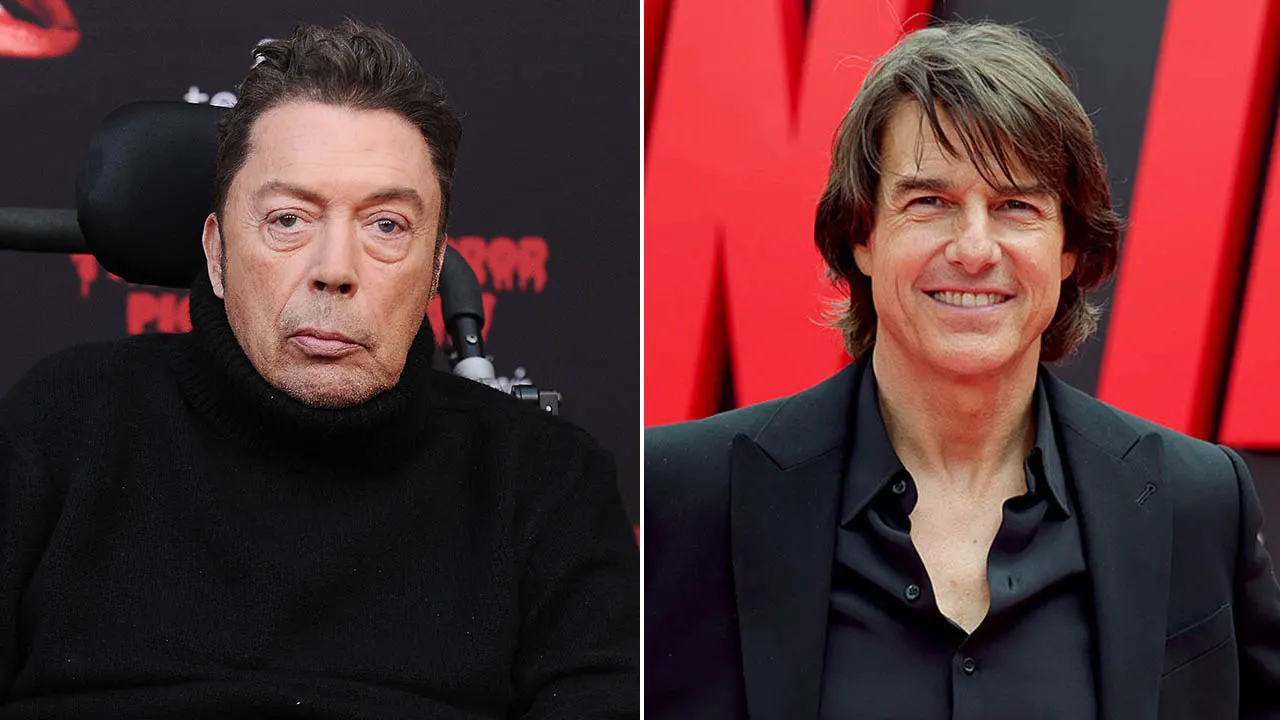Copyright Variety

If brevity is the soul of a hit, Finneas may be about to have his biggest hit ever. Apple commissioned the multiple-Oscar/Grammy winner to write a theme so short that it’s not even being called a theme, but a “mnemonic” — the short series of sounds that will precede every Apple Original show and film going forward. It won’t get him the attention or name recognition that being the co-creator of smashes like “Birds of a Feather” has. But in the long run, should it stick around for years, it might become his most widely heard piece of music, as well as his shortest. Mnemonic, Finneas says, “is sort of a beautiful word for a logo” accompanied by sound. “The things that I think of as real classic mnemonics are NBC — you can hear that in your head — or HBO has its static.” Finneas is well aware of how modern streaming consumption might make this especially ubiquitous, household by household. “If you’re binge-ing the whole season of ‘Ted Lasso’ or ‘Severance’ or ‘Disclaimer'” (the last of those being the limited series that he composed the score for himself), “you’re going to hear the mnemonic 10 times in one day. So it’s gotta be something that’s like the bite of ginger between rolls or something, you know?” He says he was approached by David Taylor, Apple’s Head of Music, with the brief for this assignment to do something very brief. “They were talking about the future of Apple TV and how they were, to some degree, simplifying it, starting with it no longer being Apple TV+. They had this new logo graphic and they needed a new piece of music to go with it. That’s such a short amount of time to have something be effective, but also be sort of memorable, and so that was the challenge and also the fun part here.” There are actually three versions of the mnemonic, all of them definitely fitting into the “minimalist” camp, to varyingly extreme degrees. “There’s like the main version, which is five seconds, which is what you hear before episodes of a television show. There’s a one-second version that is just a sting, that might play when you see a movie trailer and they just show the production company. And then there is a longer-form version [of about 12 seconds] which you’ll see it in a movie theater at the start of an Apple studios original film, like ‘Killers of the Flower Moon.’ I tried to make sure that that one felt a little more cinematic and a little grander, because it had more seconds to get from A to B, but it also just felt like it was a different environment.” Says Taylor in a statement, “Finneas was the perfect creative partner to create our new sound because his relationship with Apple is deeply authentic, beginning from his early days of him producing music and most recently his incredible score for ‘Disclaimer.’ When we set out to create a mnemonic that would represent Apple Originals, we wanted to work with someone who truly understands our brand’s emphasis on creativity and storytelling and would approach the process in a beautiful and emotional way. He delivered a completely original sound that feels cinematic and magical, serving as a welcoming invitation for viewers to enter the world of Apple Originals.” Speaking via Zoom from his home studio, Finneas points to the piano behind him as a starting point for a fleeting piece of music whose instrumentation isn’t easy to pin down before it’s gone in one ear and out the other at the start of a viewing experience. “I have my upright piano back here, so I sat and started there. I’m always more able to make something quickly on a real instrument than I am with software. I played a chord that felt kind of hopeful and kind of optimistic, but had gravity to it and hopefully had a little bit of an enigmatic, mysterious quality. And so I had this kchord thing happening and then I started building the sounds around it. I had these pieces of zinc and I was hitting them and then reversing the audio, and I was playing real piano and then reversing that, and playing these bass synthesizers and then pitching those up and gliding them down.” It may be silly to wonder if, for a piece (or pieces) this short, he “scored to picture” — but, as a matter of fact, it’s not such a ridiculous question. “I had the ability here to work to picture as I was making this piece of music, watching the logo over and over, and the logo had a lot of motion in it, and so that inspired the piece of music, super directly. I would never have come up with exactly what I came up with if I were making it without getting to see on screen what was happening.” Finneas says he didn’t labor over the mnemonic in any kind of laborious way that was disproportionate to how long it was, initially spending just a few hours on it, pre-tweaks. “Because it was so short, I initially thought, ‘Well, maybe I’ll make like 10 of these. I’ll make a bunch of options, and then they’ll like something in the 10, or even if they don’t like something in the 10, they’ll give me good feedback and I’ll make another one.’ But as I started working on this one and started pouring more and more layers into it and more and more dimensionality, it felt rich enough that I was like, ‘I really think this is the one that I want them to hear. I love this one. I don’t even want to give them two other options because I want them to just hear this one and think that’s the right one.’ And then they had great little tweaks, and the visual changed a little bit, so we nudged it here and here and there, but I think it was effective for them to just have the correct version” from the start. Finneas feels loyal to Apple as a company he feels enabled him to become a creative, first of all, and then for their early support of his and sister/co-creator Billie Eilish’s music. “They were the first big supporter, I would say; when Billie did the Apple Up Next campaign in September 2017, that was a huge deal for us. Part of that campaign was you get to do James Corden, and Billie sat down and talked to Zane Lowe, which was a meaningful vote of support in the very beginning of Billie’s career. And then they’ve given Billie Artist of the Year now twice and been huge supporters of ours. But we’ve always been very much part of their family from a buyer standpoint. I always say that I credit having a career as a producer or songwriter with being born when I was born and being able to get myself an iMac — and then, when the price of Logic Pro dropped from $800 to $200, being able to buy Logic Pro and teach myself how to use it. So I feel very kind of indebted to their products existence from a creative standpoint.” If not many Apple Originals viewers know he’s the man behind the passing hum, he’s good with that. “I love to be an invisible part of something. My favorite compliment ever is when somebody goes, ‘Dude, I was listening to this song by this artist and I looked up their credits and I saw your name. I had no idea you worked on that thing.’ The reason that they had no idea, I hope, is that it doesn’t sound like me or like Billie or something. I want to always be of service to the art itself. So I guess like what’s exciting to me is like, I hope people aren’t even thinking about it — I hope they’re seeing the Apple logo and they’re seeing the animatic and they’re hearing what I hope is the perfect way that sounds in their brain.”



